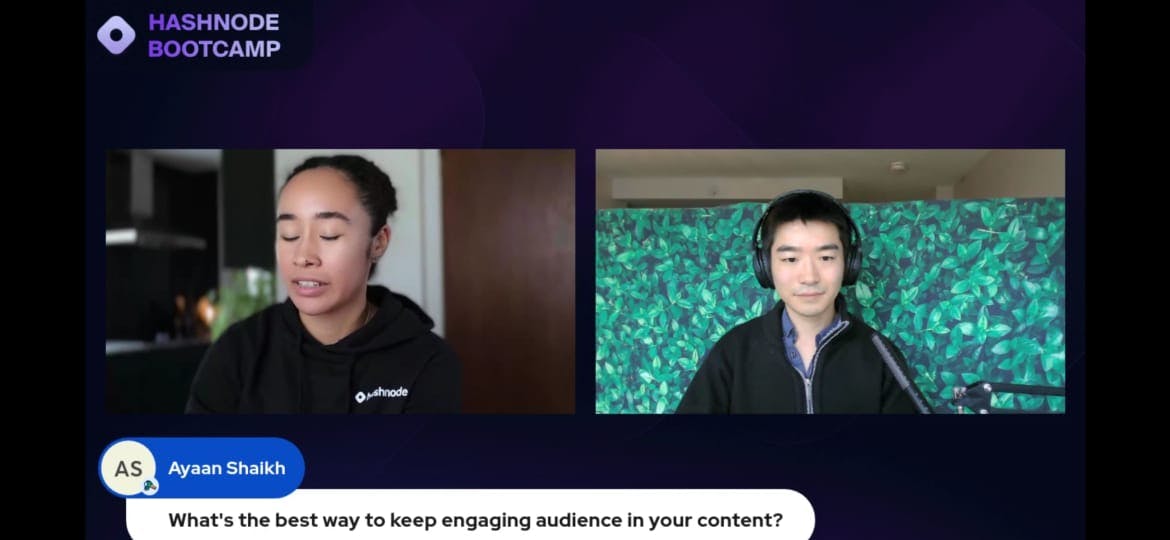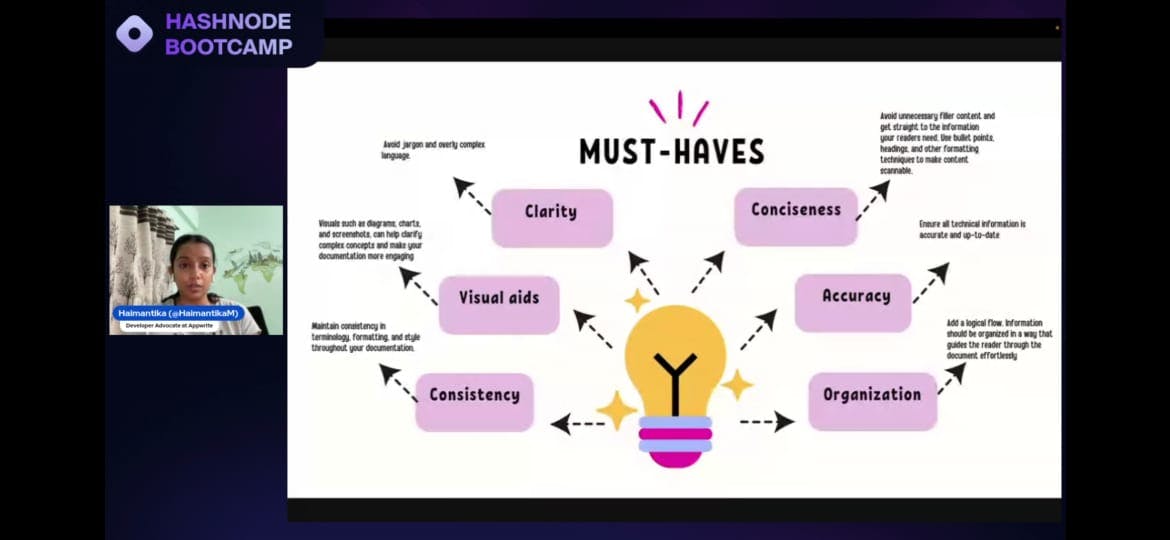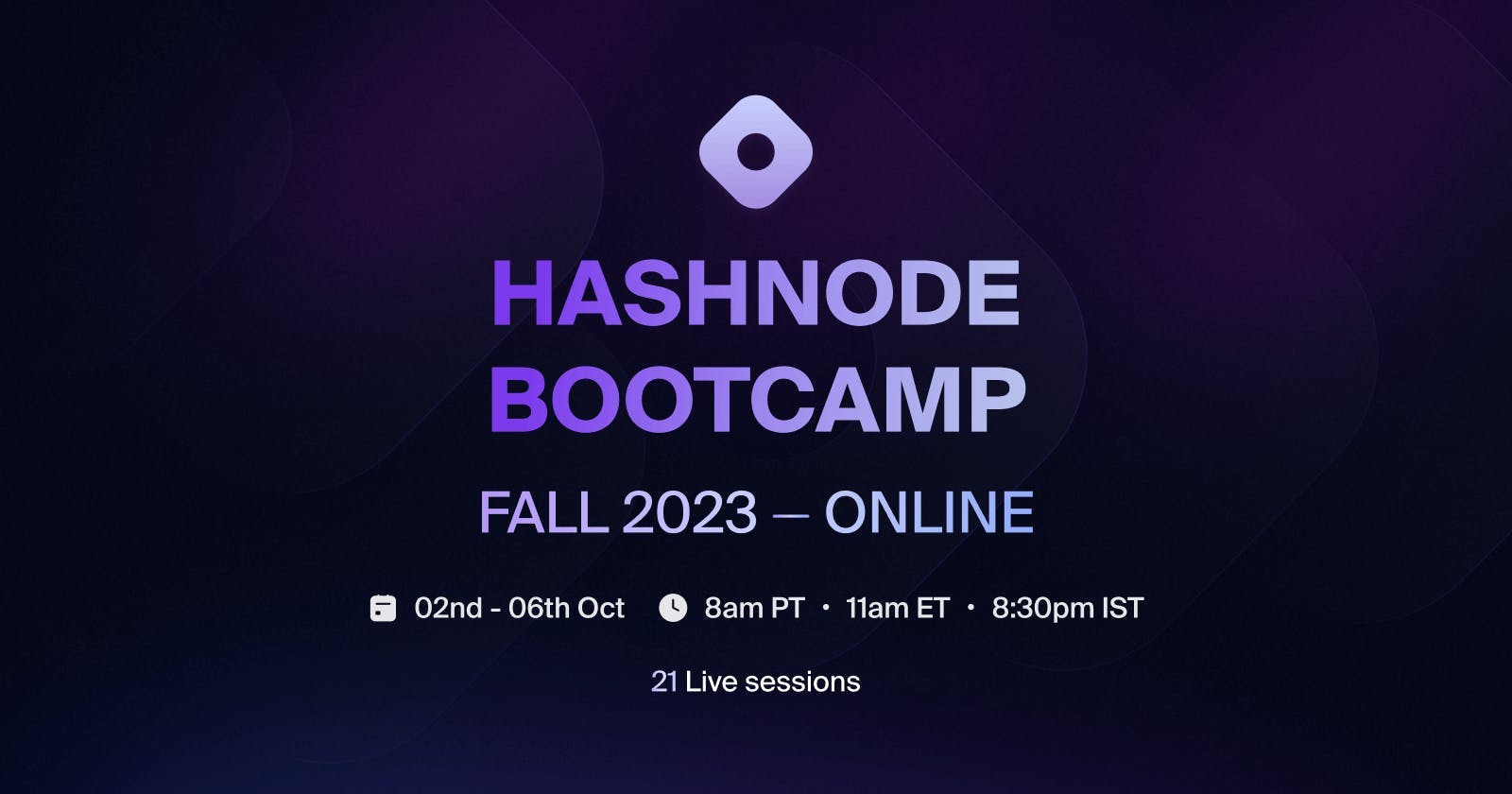Introduction
Hello there reader! 😃 Guess what? I had such an amazing time at the Hashnode boot camp today, and it's just day three! I can sense a wonderful change happening inside me already. In this blog, I'm super thrilled to tell you all about the exciting things from today's sessions and the awesome stuff I learned. So, let's dive in, shall we? 💦 Plus, I've got a cool tip for fellow participants in this article! 🚀
A Recap of Day 3
Finding Job Opportunities in Tech

Dan, the co-founder of Placement Labs, hosted a fantastic session in which he shared stories of several individuals he had helped secure positions in the web3 industry. He emphasized that you can still find your way in such areas even if you don't have any prior technical knowledge. He clarified that web3 is not solely about blockchains, and various jobs exist in this field as well. Furthermore, he pointed out that transitioning your career doesn't mean starting from scratch; rather, it involves discovering what you can do in this domain using your prior knowledge and experience.
In addition to this, Dan emphasized the importance of engaging with others and sharing your views and learnings on various platforms. 🌐
Building MVPs from Scratch

In this session, Brayden Wilmoth taught us about MVPs - what they are, why they're important, and how to build one. So, what exactly is an MVP? MVP stands for "Minimum Viable Product", which is essentially a functional product with core features centered around your initial idea. MVPs aid in understanding the business model.
Now you might be thinking, "Okay, I know what an MVP is, but how do I build one?" 🤔 Brayden beautifully explained the process of creating an MVP by simply following these three steps:
Talk 🗣️
Suppose you have an idea. The first thing that is not recommended is to immediately start building. Instead, you should go and talk to others, simply asking them if they would use your product, how often they would use it, and how much they would expect the pricing to be.
Once you have completed this step, you will already have a certain number of potential customers who are willing to use your product. This means you have successfully found customers without even building anything.
Build 🏗️
The second step involves building your product. This process can be described as first crawling, then walking, and finally running. During the crawling phase, draft your core features and gather feedback about them. As you progress, add relevant features you desire in subsequent steps, and be sure to collect feedback at every stage.
Learn 🧠
Now that your product is up and running, and people are using it, don't abandon it. Instead, try to understand your users' needs, gather feedback, work on improvements, and share the results. This will help in winning the trust of your customers.
Building your Online Presence

One of the best session of the day was by YK Dojo, also known as CS Dojo. YK guided us on how to build our online presence. He began with finding an idea: For this, he suggested leveraging our personal strengths to discover what we are good at. Then, identify the problem you want to solve. After you are ready with your idea, start talking about what you've built and establish connections. Additionally, ensure that your followers are highly engaged, as having 1,000 followers with no engagement is worse than having 100 followers who are highly engaged. Additionally, he also emphasized the importance of being consistent. 📅
He also discussed how to manage large codebases and contribute effectively. He recommended that the first step is to thoroughly understand the readme. Once completed, clone the repository locally on your computer. Examine various issues and pull requests. Begin by identifying the relevant pieces of code causing the issue and resolve them.
Learning the ABCs of Technical Writing

Day three concluded with an engaging session led by Haimantika. She discussed best practices for composing outstanding technical articles, documentation, and more. She emphasized that articles should be concise, clear, and to the point. She shared some valuable tips on how to write engaging articles:
Use simple language 🗣️
Avoid using too many links 🔗
Provide simple examples 📚
Create a well-outlined article 📄
Include necessary visual aids in the content 📊
My Learnings
Here are some of my key takeaways from today's session:
Engagement and building connections are crucial for creating opportunities.
How to progress from an idea to developing a product.
Learning the steps involved in building MVPs (Minimum Viable Products).
Discovering how to develop my presence in the online world.
Gaining an understanding of large codebases and how to contribute to them.
Learning how to write engaging articles.
Advice for Fellow Participants 🙌
Hey there! We're all going to learn so much by the end of this boot camp, aren't we? I'd recommend keeping a diary to note down the key points from each session. Trust me, it'll be super helpful when it's time to put all this awesome knowledge into action! 📚😊

Conclusion
In conclusion, day three of the Hashnode boot camp provided valuable insights into finding job opportunities in tech, building MVPs, establishing an online presence, managing large codebases, and improving technical writing skills. These learnings will be beneficial for participants as they continue to grow and develop their careers in the tech industry.
Eagerly awaiting the upcoming sessions...
#HashnodeBootcamp #LearningJourney #TechEducation #CareerGrowth
